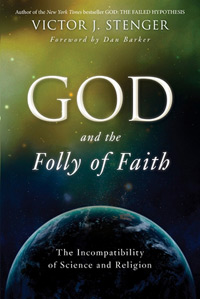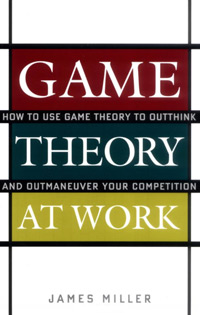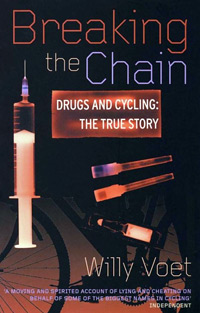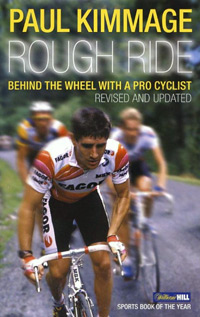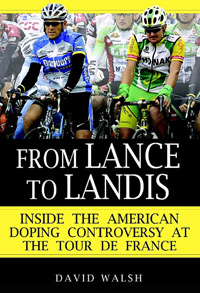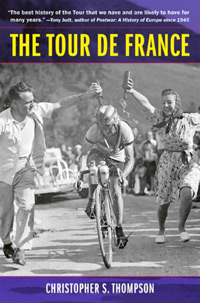In this week’s eSkeptic:
Announcing the Latest Issue
of Skeptic Magazine
TOPICS IN THIS ISSUE INCLUDE: Is Ours a Christian Civilization?; An Inside Look at How Astronomers are Searching for Extrasolar Planets; The Flake Equation: Estimating the Number of People Who Have Experienced the Paranormal; The Physics of UFOs: How Realistic is it for Spacecraft to Travel Interstellar Distances to Earth?; The SkepDoc on Multiple Personality Delusions; James Randi Celebrates the Reason Rally; Junior Skeptic explores Mokele Mbembe; Why There is Something Rather Than Nothing, and more…
Current subscribers should receive this issue by mid-September 2012.

SKEPTICALITY EPISODE 189
Interview with Victor Stenger
This week on Skepticality, Derek spends a little bit of his time before the start of Dragon*Con in conversation with Victor Stenger, discussing Stenger’s latest book, God and the Folly of Faith: The Incompatibility of Science and Religion. Based on his experience as a particle physicist, New Atheist Stenger outlines his belief that hard science has much to say about religious claims that scientific and skeptical organizations typically regard as falling outside the empirical scope of science.
Why Do Cyclists and Other Athletes Dope?
In this week’s eSkeptic we present the complete version of Michael Shermer’s article, originally published in Scientific American, that attempts to answer this question using game theory and behavioral economics and psychology. It is, for the most part, a “rational choice” made by athletes in general and cyclists in particular when it comes to the decision to dope or leave the sport altogether because it is almost impossible to compete if everyone else is doping. And if you only think everyone else is doping the temptation to choose the cheating option becomes psychologically overwhelming. You can read the original article with the graphs and charts (not included in this text version) via Scientific American Digital.
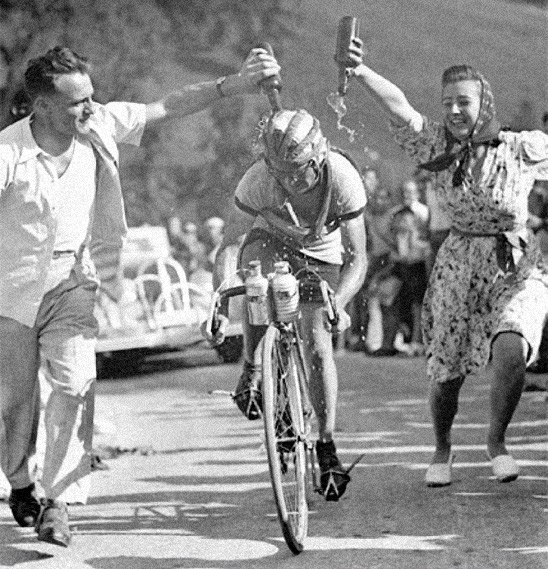
The Doping Dilemma
Game theory helps explain the pervasive abuse of drugs in cycling and sports
by Michael Shermer
For a competitive cyclist there is nothing more physically crushing and psychologically demoralizing than getting dropped on a climb. With searing lungs and burning legs, your body hunches over the handlebars like a writhing statue as you struggle to hang on to the wheel in front of you, knowing that once you come off the back your body will shut down, and along with it any hope for victory. The battle lost for the want of a few trillion oxygenated red blood cells.
I know the feeling because it happened to me in 1985 on the long climb out of Albuquerque during the 3,000-mile nonstop transcontinental Race Across America. On the outskirts of town I caught up with the 2nd place rider (and eventual winner) Jonathan Boyer, a svelte road racer who was the first American to compete in the Tour de France. About half way up the relentlessly ascending alluvial fan that forms the eastern basin of mountains surrounding the New Mexico city, that familiar wave of fatigue swept through my legs as I gulped for oxygen and stood on the pedals to stay in contact as long as possible. To no avail. By the top of the climb Boyer was a tiny dot on the shimmering blacktop and I didn’t see him again until Atlantic City. Later that night Jim Lampley, the commentator for ABC’s Wide World of Sports that was covering the race, asked what else I might have done to go faster. “I should have picked better parents,” I joked, explaining that we all have certain genetic limitations that cannot be overcome through the normal channels of training. What else could I have done?
Plenty, and I knew it. Cyclists on the 1984 U.S. Olympic cycling team told me how they injected themselves with extra blood before races—their own drawn earlier in the season (called autologous transfusion, still undetectable) or that of a friend or relative with the same blood type (called homologous transfusion, now detectable). This “blood doping” was not banned at the time, and on a sliding moral scale it seemed only marginally distinguishable from training at high altitude. Either way you increase the number of oxygen-carrying red blood cells to deliver that vital fuel to your pedal-pushing muscles. But I was 30 years old and teaching college part time, and since there was little money on the line I raced bikes primarily just to see how far I could push my body before it gave out (which it did in 1983 when my neck muscles collapsed, resulting in the malady now known ignominiously as “Shermer Neck”). Enhancing my performance artificially didn’t mesh well with my reasons for racing, plus I’m not fond of needles.
If, however, I was 20, had no prospects for an alternative career, earned my living through my one true passion of competitive cycling, made a team in which performance enhancing drugs were part and parcel of the “medical program,” realized that I could be cut from the team if I was not competitive, believed that most competitors in the sport were augmenting their natural gifts with unnatural products, and was aware that most cyclists are not tested for drugs, those who are tested almost never get caught, and those who get caught receive a relatively minor penalty, there is a very real possibility that I would have taken that other road, the one becoming ever more traveled in this sport now bent in its own entangled undergrowth.
This scenario is, in its essence, what most competitive cyclists have been facing since the early 1990s, and it is unprecedented even for a sport long known for doping. Personally, I don’t want to believe that any of these stellar athletes are guilty, and of course each individual is innocent until proven otherwise and should receive the same legal rights as any citizen (many don’t under the current system). However, the convergence of evidence from numerous lines of inquiry leads me to conclude that most of the top cyclists for the past fifteen years were using performance enhancing drugs (PEDs). That fact will become clear below, but take it from a professional skeptic that if you still believe that most elite athletes compete clean then you may want to join the Fair Play Committee for those who believe we never went to the moon. It is time to move beyond if and ask why. The reason is threefold:
- better drugs, drug cocktails, and drug/training regimens,
- an evolutionary arms-race consistently won by drug takers over drug testers, and
- a shift in the game matrix from mostly cooperation to mostly defection from the rules.
Gaming Sports
Game theory is the study of the behavior of players in a game, especially how each player chooses strategies they hope will maximize their return in anticipation of the strategies chosen by the other players in the game. In the Prisoner’s Dilemma (PD) game, for example, you and another player are prisoners arrested for a crime with the following options:
- If both of you remain silent then you each receive one year in jail;
- If you confess but the other player does not, then you go free and he gets three years;
- If the other player confesses and you don’t, then you receive the three-year penalty while he goes free;
- If you both confess then you each get two years.
Here is the game matrix for the Prisoner’s Dilemma:
| Cooperate (remain silent) |
Defect (confess) |
|||
|---|---|---|---|---|
| Cooperate (remain silent) |
-1, -1 | 0, -3 | ||
| Defect (confess) |
-3, 0 | -2, -2 | ||
If you defect on your partner and confess, then you will get either 0 or 2 years, depending on what he does. If you cooperate and stay quiet, you receive either 1 or 3 years, again depending on his response. In this scenario the logical choice is to defect. The Caltech behavioral economist Colin Camerer, in his 2003 book Behavioral Game Theory (Princeton University Press), explains why through the following hypothetical matrix for a typical PD game (assumes T > H > L > S):
| Cooperate (remain silent) |
Defect (confess) |
|||
|---|---|---|---|---|
| Cooperate (remain silent) |
H, H | T, S | ||
| Defect (confess) |
S, T | L, L | ||
| Payoffs: T(emptation), H(igh), L(ow), and S(ucker) | ||||
“Mutual cooperation provides payoffs of H(igh) for each player, which is better than the L(ow) payoff from mutual defection. However, if the other player cooperates, a defector earns the T(emptation) payoff, which is better than reciprocating and earning only H (since T > H in a PD). A player who cooperates against a defector earns the S(ucker) payoff, which is less than earning L from defecting. Since T > H and L > S, both players prefer to defect whether the other player cooperates or not.”
Research shows that when the game is played just once, or over a fixed number of rounds without the players being allowed to communicate, defection is the common strategy. But when the game is played over an unknown number of rounds the most common strategy is “tit-for-tat,” where you begin by cooperating and then do whatever the other player does. Even more cooperation can be induced in a “Many Person Dilemma” in which one player interacts with several other players, and in which players are allowed to accumulate experience with the other players in order to establish trust. This more closely resembles the real world of sports, marriage, business, and international diplomacy, in which cooperation leads to trust which leads to more cooperation. But once defection builds momentum there is a cascading sequence of defection throughout the system, leading to divorce, bankruptcy, war, and in our case study here, massive doping.
Cycling, like all sports, is a game with rules and players. The rules today clearly prohibit the use of performance enhancing drugs. But because the drugs are extremely effective and the payoffs for success are so high, and because most of the drugs are difficult if not impossible to detect, the incentive to use them is powerful. Once a few elite riders defect to gain an advantage over their cooperating competitors, they too must defect (even if they only think others are cheating), leading to a cascade of defection down through the ranks, as the doping leaders need strong supportive team members, who are then tempted to dope in order to do their job, leading to amateur athletes to dope in order to even compete, and before long the entire system breaks down. Because the rules are clear, however, a code of silence prevents any open communication and cooperation between competitors and teams in order to reverse the defection trend.
It was not always this way. Although various stimulants and painkillers were employed by many riders from the 1940s through the 1980s, the general consensus amongst sports physiologists and cycling aficionados whom I know is that these drugs were not so effective that we could not conclude that the playing field was relatively level and that the best cyclists consistently won. Until the British rider Tom Simpson died from an overdose of amphetamines on the leg-breaking climb up Mont Ventoux in the 1967 Tour (it was reportedly over 110 degrees when Simpson attacked in what would have been his best shot to win a Tour), doping regulations were virtually nonexistent. Even after Simpson’s death, doping controls throughout the 1970s and 1980s were spotty at best, and because the fans and sponsors loved the high drama of the sport’s brutal nature, and since the drugs were more for survival than anything else, officials turned a blind eye. Since there was no clear demarcation between cooperation and defection in this game configuration, few perceived it as cheating. But something happened in the 1990s to alter the matrix.
The EPO Elixir and the Evolutionary Arms Race
That something was recombinant Erythropoietin (r-EPO). In its natural state EPO is a glycoprotein hormone produced by the kidneys that when released into the bloodstream binds to receptors in the bone marrow to stimulate the production of red blood cells. Chronic kidney failure and chemotherapy can cause anemia, and so the development of r-EPO in the late 1980s proved to be a boon to chronically ill patients…and chronically competitive athletes.
r-EPO is just as effective as blood transfusions, but instead of hassling with storing bags of blood and poking long needles into a vein, the athlete can store the tiny ampoules of the drug on ice in a thermos bottle or hotel mini fridge and simply inject it subcutaneously through a tiny needle in the fatty tissue in the abdomen, the deltoid area of upper arm, or in the fat tissue at front of thigh muscle. r-EPO’s effects are directly measurable through a hematocrit (HCT) reading that gives the percentage of blood volume accounted for by red blood cells (normally spun in a laboratory centrifuge, riders have small portable centrifuges for regular HCT monitoring while traveling to races). More red blood cells means more oxygen carried to the muscles, so if a little more is good then a lot more must be great. The normal percentage for men is 45% ± 7% (38–52%). Trained endurance athletes can naturally sustain their HCT in the high 40s and low 50s. EPO can push it into the high 50s and even the 60s. The 1996 Tour de France winner, Bjarne Riis, was nicknamed “Mr. 60 percent,” which he confessed in 2007 that he achieved via r-EPO.
r-EPO appears to have made its way into the professional peloton in the early 1990s. The three-time Tour de France winner Greg LeMond thinks it was 1991. Having won the Tour in 1986, 1989, and 1990, LeMond set his sights on breaking the record of five Tour victories, and in the spring of 1991 was poised to take his fourth. “I was the fittest I had ever been, my split times in spring training rides were the fastest of my career, and I had assembled a great team around me,” LeMond recalled. “But something was different in the 1991 Tour. There were riders from previous years who couldn’t stay on my wheel who were now dropping me on even modest climbs. We were scrambling just to stay in contention.” LeMond finished 7th that year, vowing to himself that he could win clean the next year. It was not to be. “In 1992 our performance was abysmal and I couldn’t even finish the race. Finally, one of my teammates came to me and said that we had to get on the new medical program that the other teams were using.” That program, says LeMond, included r-EPO, which he refused to take, relegating him to another DNF in 1994, his final race. The matrix had changed and those who refused to defect fell by the wayside. And some who did defect fell over dead.
At 60 percent and higher the blood is so thick that clots can form, especially while sleeping when the heart rate slows (and endurance athletes are renowned for resting heart rates in the low 30s). When two elite Dutch riders—Bert Oosterbosch and Johannes Draaijer—died of heart attacks in 1989 and 1990 (respectively) after experimenting with r-EPO, some riders reportedly slept with a heart rate monitor hooked to an alarm that would sound when their pulse dropped too low, and then engage in heart-rate elevating exercise in the middle of the night. Even this precaution was not enough for the following cyclists who died from 2003 to 2005: Denis Zanette (dead at 32 from cardiac arrest/myocarditis); Marco Ceriani (dead at 16 from cardiac arrest during a bike race); Fabrice Salanson (dead at 23 from cardiac arrest during sleep); Marco Rusconi (dead at 24 from cardiac arrest while awake); Jose Maria Jiménez (dead at 32 from heart attack while awake); Michel Zanoli (dead at 35 from heart attack); Johan Sermon (dead at 21 from cardiac arrest during sleep); Alessio Galletti (dead at 37 from heart attack during a race); Ubaldo Mesa (dead at 32 from cardiac arrest while cycling).
And the peloton cycled on.
Because there was no test for r-EPO until 2001, in 1997 the Union Cycliste International (UCI), the governing body of the sport, set a HCT limit of 50 percent. In theory that should have solved the problem and created a relatively level playing field. Not so, explains Prentice Steffen, M.D., the one-time medical director for the U.S. Postal Service team. “Let’s say that we artificially adjusted to 49 percent the HCT levels of the first hundred finishers in the Tour. The playing field is still not level because some athletes are naturally at 39 percent while others are naturally at 49 percent, so those on the lower end stand to benefit much more from doping than those on the higher end.”
Test or no test, just as in evolution there is an arms race between predators and prey that drives both to greater levels of fitness, in sports there is an arms race between the drug takers and the drug testers, and in my opinion the testers are five years away from catching the takers…and always will be. Those who stand to benefit the most from defecting on the rules of the game will always be more creative than those enforcing the rules, unless the latter have equivalent incentives. In this case, shortly after the UCI set the 50 percent limit, riders figured out that they could go higher and then at test time thin their blood with a technique already allowed and routinely practiced: injections of saline water for rehydration. Presto chango.
Willy Voet, the soigneur (massage therapist and all around caretaker) for Team Festina in the 1990s, explained how he beat the testers in his tell-all book Breaking the Chain:
Just in case the UCI doctors arrived in the morning to check the riders’ hematocrit levels, I got everything ready to get them through the tests. I went up to the cyclists’ rooms with sodium drips, flasks of water mixed with 0.09 percent sodium. In an emergency, you just had to take a picture off the wall and use the hook to hang the drip from. The rest was child’s play: put the tap into the drip, stick the needle into the rider’s arm, open the tap and check the first few drips—no more than sixty a minute to avoid any shock to the system. After that I would open the tap fully because there was no danger. The whole transfusion would take twenty minutes, the saline diluting the blood and so reducing the hematocrit level by three units—just enough. This contraption took no more than two minutes to set up, which meant we could put it into action while the UCI doctors waited for the riders to come down from their rooms.
Besting the urine tests was farcical if not comical. The “hidey hole,” sometimes called “the wizzer,” was a tube with a small cork on one end and a condom filled with clean urine on the other end. “You slip the part of the tube fitted with the condom up the backside, and stick it to the skin, following the line of the perineum, as far as the testicles,” Voet explained. “The condom full of urine is held in the anus, which has the advantage of keeping the urine at body temperature, so the doctor won’t be suspicious. This system was never bettered—no doctor suspected a thing and I used it for three years without any worries.” That is, until the “clean” urine from a team mechanic turned out to be tainted with amphetamines taken to stay awake for an all night drive!
How did the new rules of this game change the players’ strategies?
The Faustian Bargain Writ Large
I put the question directly to Joe Papp, a 32-year old professional cyclist now banned for two years after testing positive for synthetic testosterone after a stage in the Tour of Turkey. As most athletes are wont to do when caught doping, Papp fervently denied the charge and vowed to fight it through legal channels. But about the time his legal bills outpaced his winnings, Papp crashed hard in an Italian race, leaving him in a hospital with a massive hemorrhage that he attributed to the drugs he took. “I stopped to consider what was to be gained in fighting the charges against me and I realized that I was only perpetuating the problem, so I came clean and told my story.”
The consequences were far worse than the two-year ban. “The sport spit me out,” Papp lamented. “A team becomes a band of brothers in which there is shared suffering, but with a team of dopers there’s an additional bond—a shared secret—and with that there is a code of silence. If you get busted, you keep your mouth shut. The moment I confessed I was renounced by my friends because in their mind I put them at risk. One guy called and threatened to kill me if I revealed that he doped.” Papp never wanted to dope, he explained, and neither did most of his fellow cyclists. But once the drugs are available to give a few cyclists an edge, pressure mounts to close the performance gap by any means, legal or illegal. Recalling the day he was handed the “secret black bag,” Papp explained how a moral choice becomes an economic decision: “When you join a team with an organized doping program in place you are simply given the drugs and a choice: take them to keep up or don’t take them and there is a good chance you will not have a career in cycling.” Most apparently chose the former, says Papp, noting that “one European team that I was on every one of the riders were doping.”
Papp was never a Tour de France-caliber cyclist, however, so perhaps the game matrix is different at the elite level. Nope. “The law of silence: it exists not only in the Mafia but also in the peloton,” writes Paul Kimmage about the elite pro circuit in his 1990 mea culpa, Rough Ride. “Those who break the law, who talk to the press about the dope problems in the sport are despised. They are branded as having ‘craché dans la soupe,’ they have ‘spat in the soup’.” After an extensive exposé on how the doping program worked in the 1980s, Kimmage gave this game-theoretic analysis of the psychology of defection: “The big men never talk and to be honest I don’t really blame them—what have they to gain? They too were once young and innocent. Why should they jeopardize their hard-earned respect? If they took illegal substances it was only because everyone else was doing it.”
This was before r-EPO, which only exacerbated the problem says Frankie Andreu, the “super domestique” on the U.S. Postal Service team, riding in support of Lance Armstrong. “For years I had no trouble staying with most of the riders on the climbs, doing my job to help the team leader,” Andreu explained. “Then around 1995 or 1996 the speeds of the races shifted dramatically upward. One year we were all in our small chain ring on a climb, and the next year most of the guys in their big chain ring on the same climb. Something happened, and it wasn’t just training.”
Andreu resisted the temptation as long as he could, but by 1999 he could no longer do his job. “It became apparent to me that enough of the peloton was on the juice that I had to do something.” He then made the fateful drive to Switzerland where r-EPO could be purchased over the counter, and began injecting himself two to three times a week. “It’s not like Redbull, which gives you instant energy,” he explained when I asked what it felt like. “But it does allow you to dig a little deeper, to hang on to the group a little longer, to go maybe 31.5 mph instead of 30 mph, which meant that I could get back on the group after a long climb to help my team.” And help it he did, as this was the year that Lance Armstrong and the Posties began their domination of the sport.
An additional benefit of r-EPO in a brutal three-week race like the Tour de France is not just boosting HCT levels, but holding them there. “Let’s say you’re at 48 percent at the start of the race,” Andreu calculated. “By the end of the Tour you’d normally be at around 42 percent and really feel the difference. Without EPO I was completely wasted at the end of a Tour. With EPO you can hold it at 48 percent for the entire race. I remember that by the late 1990s the riders looked so much more refreshed at the end of the Tour than they used to.” Jonathan Vaughters, a former teammate of Lance Armstrong on U.S. Postal Service, crunched the numbers for me this way: “The big advantage of blood doping is the ability to keep a 44% HCT over three weeks (or maybe, unsuspectingly, increase it to 46%…just a teeny bit, that no one would notice). With expected hemodilution and hemolysis over three weeks, a 44% HCT should be 40% by the end, so just stabilizing it at 44% is a 5% performance advantage. Bumping it up any is maybe a 10% performance increase. This is a big advantage.”
And this does not include the performance enhancing effects of the other drugs in the user’s cocktail.
The Difference in Doping and the Difference it Makes
A window into what is in that cocktail was opened on July 8, 1998, when the aforementioned Willy Voet was stopped at the Franco-Belgian border on his way to the Tour de France. In his car police discovered refrigerated bags containing 234 doses of r-EPO, 86 vials of human growth hormone, 160 capsules of testosterone, 4 ampoules of adrenocorticotrophic hormone, 248 vials of something labeled “physiological serum,” 8 doses of hepatitis-A vaccine, and 60 doses of a blood-thinning drug to prevent strokes and heart attacks from excessively high HCT. Also in Voet’s grab bag (and in his body) was his own concoction he called the “Belgian mix” (or sometimes “‘madman’s mix’ because the next day you looked as if you’d been in the nuthouse”) a potent concoction for riders on difficult stages (and soigneurs who have to work all night): amphetamines, caffeine, cocaine, corticosteroids, heroin, and assorted painkillers. As the Judge who presided over the doping case of the French champion Richard Virenque, noted in his decision: “These are not racers, they are pedaling test-tubes.”
Do these drugs really make a difference? They do. By many measures, starting with average speed improvements over the past half century. To control for yearly variance effected by course changes and weather, I averaged speeds over 14-year blocks of time starting with 1991 (when r-EPO apparently became widely used). From 1949 to 1962 the Tour winner’s average speed was 34.7 kilometers per hour. From 1963 to 1976 the winner’s average speed increased to 35.4 kph, a 2% difference. From 1977 to 1990 the winner’s average speed increased another 2% to 36.2 kph. From 1991 to 2004 the winner’s average speed jumped to 39.5 kph, a 9% increase. Such a quantum leap in speed cannot be accounted for by equipment, nutrition, or training, as the 1980s were the high water mark for such revolutionary transitions from the old to the new (aerodynamic clothing, wheels, and components, aero bars, light-weight composite bikes, click-in pedal systems, index gear shifting, etc.). For those who think that the sport was clean after 2004 (when stricter doping controls were implemented), the 2005 and 2006 Tours were the fastest ever at 41.6 kph and 41.0 kph respectively. Perhaps the massive crackdown on and disqualification of dopers in the 2007 race finally made a difference, because the average speed of that race was back down to 39.0 kph.
Scientific studies on the effects of PEDs are few in number and usually conducted on non- or recreational athletes. For obvious reasons, elite athletes who dope are disinclined to disclose their data to curious scientists, but the consensus among sports physiologists I interviewed is that r-EPO boosts performance a minimum of 5% to 10%, and in conjunction with the brew of other PEDs an additional 5% to 10% can be squeezed out of the human engine. In events decided by less than one percent differences, this is colossal. The Australian sports physiologist Michael Ashenden, founder of the group Science and Industry Against Blood Doping, co-authored a 2002 study on recreational athletes in which they gave them r-EPO (or a placebo) over a 12-week span, using VO2max (maximal aerobic power) as the performance measure. The r-EPO group experienced 7.7%, 9.7%, and 4.7% improvements at weeks 4, 8, and 12. A 2007 study on non-athletes found even more spectacular results for the miracle drug, with a 12.5% and 11.6% increase in VO2max at weeks 4 and 11 respectively. Training at high altitude, by comparison, yields only a 1 to 1.5% improvement, Ashenden says, so any notion that blood doping is morally equivalent to high altitude training is put to the lie by the data.
Sports physiologists Jonathan Dugas and Ross Tucker, who run a highly informative blog on the subject (scienceofsport.blogspot.com), cautioned that because such studies have been conducted on non- or recreational cyclists “perhaps the size of the improvement is larger than one would expect in a pro athlete who is much nearer the maximum level even without the use of EPO.” However, Dugas and Tucker noted that such figures are only for in-competition differences, whereas an additional benefit likely comes through recovery assistance. “A Tour rider is expected to get progressively worse as the Tour progresses. However, if doping is used, and this decrease in performance is merely prevented, then the difference between a doper and non-doper might be enormous.”
The Italian sports physiologist Michele Ferrari, as deeply knowledgably on the subject as he is controversial (because of his close affiliation with elite athletes who have tested positive for doping or been accused of same), computed the advantage for me this way: “If the volume of Hb [hemoglobin] increases by 10%, performance improves by approximately 5%. This means a gain of about 1.5 second/km for a cyclist pedaling at 50 km/h in a time trial, or about 8 seconds/km for a cyclist climbing at 10km/h on a 10% ascent.” Translated to the Tour de France, a cyclist who boosts by 10% the amount of hemoglobin in his blood through transfusion or r-EPO, will cover a 50 km time trial 75 seconds faster in a race typically decided by a few seconds. Or, on any of the numerous 10 km/10% climbs in the Alps and Pyrenees, that same blood difference would amount to a whopping 80 seconds per climb. All this in an event where the difference between the guy standing in yellow on the top step of the podium and the two guys on either side of him is typically no more than two to five minutes. If any of the top cyclists are on the juice, their erstwhile competitors cannot afford to give away such margins. Here is where the game matrix kicks into defection mode.
Nash Equilibrium and the End of Doping in Sports
In game theory, when players reach a point where none have anything to gain by unilaterally changing strategies, this is called Nash equilibrium, a concept identified by the Nobel laureate mathematician John Nash and immortalized in the film Beautiful Mind. To end doping in sports we need to structure the game so that competing clean is Nash equilibrium. That is, in the hypothetical game matrix, we need to change T > H > L > S to H > T and S > L so that the (T)emptation to defect is of a lower utility value than cooperating, and especially so that the players do not feel like (S)uckers for following the rules. As Camerer explains, “Lowering T and raising S increase cooperation in the PD. Preplay communication…is the nonpayoff variable that raises the rate of cooperation by the most.” In sports, preplay communication means breaking the code of silence, everyone admitting that there is a problem to be solved, and then regularly communicating transparent results of clean drug tests that demonstrate cooperation > defection. Here are my recommendations for how cycling (and other sports) can reach a positive Nash equilibrium.
- Grant immunity for all athletes pre-2008. Since the entire system is corrupt and most competitors have been doping, it accomplishes nothing to strip the winner of his title after the fact when it is almost certain that the runners’ up were also doping. Immunity will enable retired athletes to work with governing bodies and anti-doping agencies for improving the anti-doping system.
- Increase the number of competitors tested, in competition, out-of-competition, and especially immediately before or after a race to prevent counter-measures from being employed. Testing should be done by independent drug agencies not affiliated with any sanctioning bodies, teams, sponsors, or riders (conflicts of interest abound in cycling drug testing). Testing should also be done by teams on their own riders, and corporate sponsors should insist and assist in enabling this self-policing process.
- Increase the incentive of anti-doping scientists to develop new tests for presently undetectable doping agents through an X-Prize type reward. For example, offer a $100,000 prize for the first person to invent a test to detect human growth hormone or autologous blood doping. To reverse the present arms race trajectory, the incentive for drug testers must be equal to or greater than that of drug takers. Money is a universal incentive.
- Increase substantially the penalty for getting caught. One strike and you’re out, forever. To protect the athlete from false positives or inept drug testers (both exist), the apparatus for arbitration and appeals must be fair and trusted by both sanctioning bodies and athletes, but once a decision is made it must be substantive and final.
- Mandatory disqualification of all team members from an event if any one team member tests positive for doping, plus a return of all salary paid and prize monies earned by the convicted athlete to the team sponsors. This will bring substantial social and psychological pressure for mutual cooperation among members of a team as the band-of-brothers psychology becomes self-enforcing.
If this sounds utopian, it isn’t. Jonathan Vaughters, who is now the director of Team Slipstream/Chipotle, has already implemented a program of extensive and regular in-house drug testing. “Remember, most of these guys are athletes not criminals. They can be scared out of doping as they never wanted to dope in the first place,” he enthused, insisting that the sport has now turned the corner. “They just got stuck in having to dope, as you said, since 10%-20% in a race that’s decided by less that 1% is not a disadvantage you want. But if they believe the rest are stopping and feel it in the speed of the peloton, they will stop too, with a great sigh of relief.”
Prentice Steffen, now Vaughter’s medical director, explained that the team is working directly with the independent anti-doping Agency for Cycling Ethics, located in Los Angeles and headed by Paul Scott—until recently attorney for the World Anti-Doping Association (WADA)-accredited UCLA drug testing lab—whose goal it is to privatize doping detection and shift the burden of responsibility from the sanctioning bodies to the teams themselves. It is a lofty goal that doesn’t come cheap. According to Steffen, their team is spending over $300,000 a year to have their 25 riders annually tested 40 times on a battery of tests. “Our goal is to create an environment in which there are enough dissuasive pressures in place so that the riders are looking around and think that they don’t have to dope to make the team, to stay in the competition, to win. Then they will look outward at the other pro teams and see that less and less of their competitors are on the doping program, and even if they think that some are, their calculations in their mind will be to stay clean. That’s the best we can hope for.”
Hope springs eternal, but with these changes I believe that we can shift the psychology of the game matrix from defection to cooperation, thereby leveling the playing field and returning sports to the tradition of excellence in performance enhanced only by one’s will to win. ![]()
Key Concepts
Over the past several years there has been considerable media attention paid to a number of prominent athletes who have been caught using performance enhancing drugs. Cycling in particular has been rocked with revelations that many competitors have been regularly using recombinant Erythropoietin (r-EPO), an artificial hormone that stimulates the production of red blood cells that increases the delivery of oxygen to muscles to improve performance by as much as five to ten percent. Additional performance enhancing drugs include testosterone, human growth hormone, cortisone, and steroids, perhaps adding an additional five to ten percent improvement.
Despite the fact that at least a dozen cyclists have died from strokes and heart attacks since EPO was introduced in the early 1990s, doping continues unabated in professional racing circles. The reason is that there is an evolutionary arms-race consistently won by drug takers over drug testers, and there has been a shift in the game matrix from mostly cooperation to mostly defection from the rules.
Game theory helps us understand the dynamics of why athletes dope. Because the drugs are extremely effective and the payoffs for success are so high, and because most of the drugs are difficult if not impossible to detect, the temptation to use them is almost irresistible, and once a few elite athletes defect to gain an advantage over their cooperating competitors, they too must defect, leading to a cascade of defection down through the ranks all the way into amateur levels.
More to Explore
- Camerer, Colin F. 2003. Behavioral Game Theory: Experiments in Strategic Interaction. Princeton University Press.
- Miller, James. 2003. Game Theory at Work. New York: McGraw-Hill.
- Voet, Willy. 2001. Breaking the Chain: Drugs and Cycling: The True Story. London: Yellow Jersey Press (Random House).
- Kimmage, Paul. 2007. Rough Ride: Behind the Wheel with a Pro Cyclist. London: Yellow Jersey Press (Random House).
- Thompson, Christopher S. 2006. The Tour de France. Berkeley: University of California Press.
- Walsh, David. 2007. From Lance to Landis: Inside the American Doping Controversy at the Tour de France. New York: Ballantine Books.
Skeptical perspectives on why we cheat and lie…
-
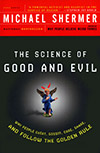 The Science of Good and Evil: Why People Cheat, Gossip, Care, Share, and Follow the Golden Rule
The Science of Good and Evil: Why People Cheat, Gossip, Care, Share, and Follow the Golden Rule
by Dr. Michael Shermer -
This book applies the latest findings of science to offer an original model of the bio-cultural evolution of morality and a new theory of provisional ethics that challenges the reader to confront these timeless issues from a new perspective — one that suggests that both morality and immorality evolved in human biological and cultural evolution, that we can make free moral choices in a determined universe, that moral principles can have a sound rational basis supported by empirical evidence (without being dogmatically absolutist or dependent on an external source of validation), and that we can be good without God. Shermer calls for a national debate on the origins of morality, the basis of moral principles, and the need for a more universal and tolerant ethic… This book is also available on Kindle and as an Apple iBook.
-
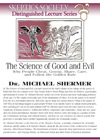 The Science of Good and Evil (lecture)
The Science of Good and Evil (lecture)
by Dr. Michael Shermer -
What are the origins of morality? What are the foundations of ethics? Is it human nature to be moral? If we live in a determined universe, then how can we make free moral choices? How evolutionary heritage and cultural history generated an ethical system.
-
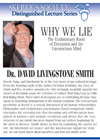 Why We Lie: The Evolutionary Roots of Deception and the Unconscious Mind
Why We Lie: The Evolutionary Roots of Deception and the Unconscious Mind
by Dr. David Livingstone Smith -
Deceit, lying, and falsehoods lie at the very heart of our cultural heritage. The ever-present possibility of deceit is a crucial dimension of all human relationships. Philosopher and evolutionary psychologist Smith elucidates the essential role that deception and self-deception have played in human—and animal—evolution and shows that the very structure of our minds has been shaped by the need to deceive. Smith shows that by examining the stories we tell and the unconscious signals we send, we can learn how our minds work.



